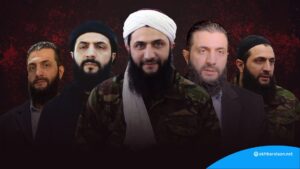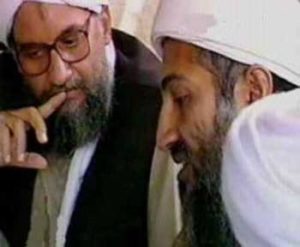Much of the secondary literature in the West depicts Professor Ghulam Niazi as the progenitor of the mujahidin movement in Afghanistan in the 1960s. For a variety of reasons this contradicts primary sources that focus more on the various resistance efforts elsewhere in Afghanistan during this period. Of course, the primary sources are also influenced by the political projects of their authors.
Take, for example, the case of Yunis Khalis. Khalis’s biographers are more interested in a narrative that gives their subject a prominent role in the fight against the Soviets than they are in writing about the creation of an Afghan Islamist movement initiated by Professor Niazi at Kabul University. On the other hand, the two mujahidin parties that trace their founding mythology directly to Professor Niazi (Hizb-e Islami (Gulbuddin) and Jami’at-e Islami) have also been remarkably successful at setting the terms of the historical debate about the origins of the Afghan mujahidin. So it should be no surprise that the Khalis literature reflects the importance of the political gatherings hosted by Yunis Khalis and other eastern ‘ulama, while the material linked to the Kabul Islamists emphasizes Professor Niazi.
It may be decades before it is possible to untangle the accounts that have already been published by eye witnesses to this chaotic period of Afghan history; so many of the principal actors have died that we will probably never know the full story. But while it is too early to offer a full depiction of the resistance activities in Nangarhar in the years before 1979, my recent research on the biographies of Yunis Khalis has given me some unexpected insight into the kinds of political discussions that were taking place in eastern Afghanistan before the mujahidin parties had fully formed. While Khalis did not take a major leadership role in the early days of the resistance movement, he was active in a variety of circles and led many discussion groups with students and others about political and religious issues. These meetings were generally much less public or contentious than the sometimes raucous activities organized by the Muslim Youth, but they were not without their own controversy.
At one such gathering at Nangarhar University in 1349/1970, a doctor (or medical school student–Khalis’s biographer Din Muhammad equivocates) spoke out on an issue that apparently touched one of Khalis’s nerves. According to Din Muhammad the doctor said that “Mullahs are up to no good when they preach against money or they teach children; they must not take money or a salary (Din Muhammad 2007, 32).” Although we do not get a full picture of this doctor or his argument, Khalis’s contemptuous response to him is fascinating and I include it here in its entirety:
I studied in private mosques, and I paid my own expenses for traveling to and fro for my education, and I worked in the mosques. There were very many students like me who did not even have full bellies, and we had no clothing, and we would go long distances barefoot to find teachers to educate us in the mountains. And you, the cost of your housing is paid, and you study in beautiful cultivated areas; to you living expenses have been given for passing the night in beautiful places. From among you doctors are made, and the national budget has decreased because of you, while nothing has been spent on me. Come, in the manner of a mullah I pledge to you that I take absolutely no money for being an imam, and I teach classes for children without such money. You, a doctor, come to me and pledge to me that you will write prescriptions for sick people without charge. (Din Muhammad 2007, 32-33)
This argument at a gathering at Nangarhar University echoes a theme that Din Muhammad elaborates in his discussion of Yunis Khalis as a homeopathic healer: healers should serve the poor for no charge (Din Muhammad 2007, 224-226). Without having more information about other similar gatherings, it is hard to know the extent to which this discussion at Nangarhar University was typical. But even so, it reveals something about Khalis’s perception of himself, his own life story, and the role of social justice in his political ideology.
The critical importance of providing for the poor in the community is also discussed prominently in the context of Khalis’s decision to create a new housing development called Najm al-Jihad south of Jalalabad after the end of the Soviet-Afghan War (Din Muhammad 2007, 266-267). Din Muhammad explicitly states that the name for this neighborhood was chosen to reflect its connection to the famous Mullah of Hadda, also known as Najm al-Din Akhundzada. Today Khalis’s neighborhood is only a few kilometers west of the Mosque at Hadda, and future investigations may help to uncover whether Khalis’s connection to the famous Mullah of Hadda goes any deeper than his choice of a name for a housing development that was ostensibly designed in part for poor people, the disabled, and war widows.
The Khalis biographies should not be read as a coherent argument against Professor Niazi’s prominent position in the development of Afghan Islamism. However, they do offer important clues about the political activities of prominent ‘ulama in eastern Afghanistan in the 1970s who were only peripherally involved in the Kabul Islamist movement. In the process of depicting these largely informal discussion groups and gatherings, Din Muhammad goes out of his way to stress the critical role that social justice played in Khalis’s politics. Any serious conversation about the history of the Afghan mujahidin will always have to account for the better known activities of Professor Niazi’s protégés in the Muslim Youth and Jami’at-e Islami.
However, this story of Khalis’s argument with a doctor at Nangarhar University in 1349/1970 is a helpful reminder that the relatively cosmopolitan scene at Kabul University was not the only important site of political contention in Afghanistan in the 1960s and 1970s. It is too early to say who attended these kinds of gatherings in Nangarhar or what significance this participation may have had for the later development of the mujahidin movement, but as more sources are published these kinds of investigations promise to show us a much richer picture of the early days of the anti-leftist political resistance in eastern Afghanistan.





3 Responses
Very interesting, thank you.
I have only just started to read about Afghanistan, so please excuse my lack of knowledge.
1) You, just as in the book I’m reading at the moment, appear to make a distinction between eastern Afghanistan on the one hand, and Kabul on the other. I can appreciate that Kabul as the capital and a large urban centre probably had and has a different culture and different clerics, but was there no great overlap between ‘eastern ‘ulama’ and ‘Kabul Islamists’ given Kabul’s position in what I would (perhaps wrongly) consider the east of the country?
2) I am very interested in the actual genesis of the Taliban movement, and, particularly, Deobandism’s role in creating the conditions for the puritanism the movement observed mainly in urban areas in power. Could you recommend a book or books that deal with Deobandism and the Taliban, please?
Shlomo, good questions. I distinguish between eastern Afghanistan and the rest of the country for a simple reason. Although the east of the country is itself very diverse, taken as a whole it is distinct enough from other parts of Afghanistan to merit notice. We see this in a variety of expressions of political and material culture, but it’s also visible in more academically accessible ways. For example linguists generally distinguish between the different dialects of pashto in part by following the usage of several different consonants which are pronounced very differently in different parts of Afghanistan. Although it is too simple to say that “in the east they say Pakhto and in the south and center they say Pashto,” this is a generalization that isn’t too far from reality. This also shows up in ethnographic work on the genealogies of the different large tribal groups in Afghanistan. Normally books will talk about the Ghilzai and the Durrani, but there is also an upland eastern group which claims a different apical ancestor. These tribes are variously called the “eastern tribes” or the “Karlanri/Karlani” tribes (there is a retroflex “n” in this word which makes spelling it in English hazardous).
And aside from all of this rather stuffy academic argumentation about east vs. center vs. south, Kabul was a unique environment during this period. It was much more plugged into the international community than other areas of Afghanistan, and was much more directly affected by the liberalizing policies and politics of the central government in the 1960s. There were more open supporters of leftist ideologies in Kabul, especially at the university, than anywhere else in the country that I know of. This helped to create a countermovement amongst certain more religious groups, and this is where Niazi comes into the story. I distinguish between the eastern ‘ulama and the Kabul Islamists because they were mostly very separate groups. There were individuals like Khalis who had connections to the Kabul movement from the east, but most of the ‘ulama in the east of Afghanistan did not necessarily have close ties to the university faculty and students in Kabul.
As for books to read about the Taliban and Deobandism, I think there are a lot of decent books out. If you have never read anything by Ahmed Rashid, it is worth looking at what he has said about the Taliban. He represents a certain point of view from the Pakistani elite that is worth knowing about. I think that for understanding the historical basis of Islam in South Asia, Muhammad Qasim Zaman’s book “The Ulama in Contemporary Islam” is excellent. That should get you started.
Shlomo, it occurs to me that you may also be interested in reading Before Taliban by David Edwards. There are also several pieces that have come out recently about the connections between various Afghan mujahidin groups and al-Qa’ida. See especially Brown and Rassler’s upcoming book The Fountainhead of Jihad, which is based in part on their 2011 report on Haqqani for the Combating Terrorism Center. Linschoten and Kuehn also bring together a lot of interesting sources in their book on the Taliban and al-Qa’ida called “An Enemy We Created.”